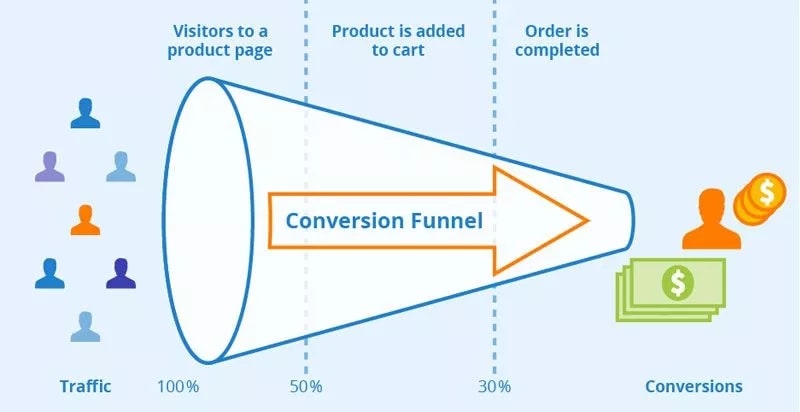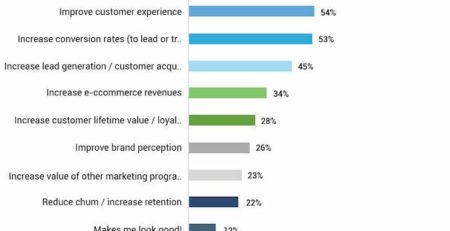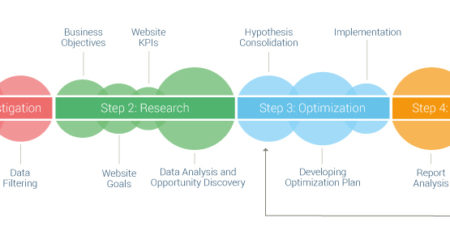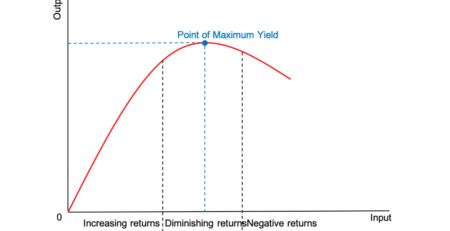Unlocking Potential: Exploring The Multifaceted Benefits Of Conversion Rate Optimization
Welcome to the exciting world of conversion rate optimization! In this article, we’ll dive deep into the multifaceted benefits of unlocking the potential of conversion rate optimization.
Have you ever wondered how some websites manage to attract and convert so many visitors into customers? Well, that’s the power of conversion rate optimization! It’s all about making your website work smarter, not harder.
By strategically analyzing and making improvements to your website’s design, layout, and overall user experience, you can significantly increase your conversion rates and achieve your business goals. So, let’s embark on this journey of discovery and explore the incredible benefits that conversion rate optimization can bring to your online presence.
Unlocking Potential: Exploring the Multifaceted Benefits of Conversion Rate Optimization
Introduction: Conversion Rate Optimization (CRO) is not just a buzzword in the world of digital marketing. It is a strategic approach that holds the power to unlock the true potential of your online business. By analyzing user behavior, optimizing web design, and implementing data-driven strategies, CRO aims to increase the percentage of website visitors who take desired actions, ultimately leading to higher conversion rates. In this article, we delve into the multifaceted benefits of Conversion Rate Optimization and why it should be an integral part of your online marketing efforts.
The Power of Data: Understanding User Behavior through Conversion Rate Optimization
Introduction: When it comes to understanding your customers, data is everything. Conversion Rate Optimization provides valuable insights into user behavior, enabling businesses to make data-driven decisions. By analyzing and interpreting conversion data, businesses can gain a deep understanding of what drives their customers to convert. This understanding allows them to tailor their marketing strategies, website design, and messaging to better resonate with their target audience. Let’s explore the power of data and how it can drive success for businesses.
1. A Deeper Understanding of Your Customers
In-depth conversion analysis allows businesses to gain a deeper understanding of their customers. By tracking user behavior, businesses can identify patterns, pain points, and preferences of their target audience. Conversion Rate Optimization enables businesses to answer crucial questions such as–
– Which pages are driving the most conversions?
– Which CTAs are resonating with users?
– Where are users dropping off in the conversion funnel?
By answering these questions, businesses can refine their marketing strategies, optimize their website design, and create compelling content that aligns with their customers’ needs and desires. Ultimately, this deeper understanding of customers leads to more effective and personalized marketing efforts, enhancing the overall user experience.
The Benefits of a Personalized User Experience
Personalization is a key component of successful conversion rate optimization. By tailoring the user experience based on user behavior and preferences, businesses can create a more engaging and relevant experience for their visitors. Personalization can take many forms, such as displaying personalized product recommendations, offering customized content based on user interests, or providing targeted offers based on previous interactions. A personalized user experience not only increases the likelihood of conversion but also enhances customer satisfaction, loyalty, and advocacy.
2. Identifying and Addressing Conversion Barriers
Conversion Rate Optimization is not just about driving more conversions; it’s also about identifying and addressing conversion barriers. By analyzing user behavior, businesses can pinpoint the obstacles that prevent users from converting and take steps to remove or optimize them. These barriers can range from unclear navigation, slow website speed, or lack of trust signals to complicated forms and confusing layouts. Addressing these barriers can significantly improve user experience and increase conversion rates.
Optimizing the Checkout Process for Higher Conversions
One common conversion barrier is a complicated or lengthy checkout process. By streamlining the checkout process and eliminating unnecessary steps, businesses can reduce cart abandonment rates and increase conversions. This can be achieved by implementing features such as guest checkout, auto-populating customer information, displaying progress indicators, and offering multiple payment options. Simplifying the checkout process not only improves the user experience but also instills confidence and trust in customers, leading to higher conversion rates.
3. Maximizing Return on Investment (ROI)
At the end of the day, businesses invest in marketing efforts to achieve a positive return on investment. Conversion Rate Optimization plays a crucial role in maximizing that return. By optimizing websites and marketing campaigns, businesses can ensure every advertising dollar is spent effectively and efficiently. Instead of blindly driving traffic to the website, CRO focuses on converting a higher percentage of that traffic. This can result in significant cost savings and increased revenue. In a highly competitive online landscape, maximizing ROI is essential for sustainable business growth.
The Value of A/B Testing in Conversion Rate Optimization
A/B testing is a powerful tool within Conversion Rate Optimization that helps businesses make data-driven decisions. By testing different variations of web pages, CTAs, headlines, or forms, businesses can determine which elements perform better in terms of conversions. This iterative process allows businesses to continually optimize their website and marketing strategies based on evidence, rather than assumptions or guesswork. A/B testing ultimately leads to better-informed decisions, higher conversion rates, and improved ROI.
Building Trust and Credibility: The Role of Conversion Rate Optimization
Introduction: In today’s digital age, trust and credibility are crucial factors that influence consumers’ purchase decisions. Conversion Rate Optimization plays a pivotal role in building trust and credibility, ensuring that businesses can establish a strong online presence. Let’s explore how CRO can help businesses enhance their brand image, foster customer trust, and ultimately drive conversions.
4. Enhancing User Experience and Website Trustworthiness
When users visit a website, they subconsciously evaluate its trustworthiness within seconds. A poorly designed or unprofessional website can instantly erode trust and credibility. Conversion Rate Optimization focuses on enhancing user experience and creating visually appealing, user-friendly websites. By optimizing elements such as website speed, mobile responsiveness, intuitive navigation, and clear calls-to-action, businesses can instill confidence in visitors and increase the likelihood of conversions.
The Impact of Social Proof on Conversions
Social proof is another powerful component of building trust and credibility. By showcasing positive customer reviews, testimonials, case studies, or social media mentions, businesses can leverage social proof to reassure potential customers and increase conversions. Conversion Rate Optimization considers the strategic placement and presentation of social proof elements to maximize their impact. Displaying social proof prominently on product pages, landing pages, or checkout processes can help alleviate doubts, strengthen brand credibility, and drive conversions.
5. Driving Repeat Business and Customer Loyalty
Conversion Rate Optimization not only focuses on acquiring new customers but also on nurturing existing ones. By creating a personalized and seamless customer experience, businesses can foster customer loyalty and drive repeat business. Returning customers are often more likely to convert and make higher-value purchases. Through CRO strategies such as personalized recommendations, loyalty programs, and targeted email marketing, businesses can keep customers engaged, satisfied, and loyal.
The Role of Retargeting in Conversion Rate Optimization
Retargeting is a powerful tactic within Conversion Rate Optimization that allows businesses to reach out to users who have previously interacted with their website or shown interest in their products or services. By serving targeted ads to these users across various platforms, businesses can stay top-of-mind and encourage them to come back and convert. Retargeting helps businesses maximize their conversion opportunities by reaching out to warm leads who are already familiar with their brand.
Optimizing for Success: Strategies and Best Practices in Conversion Rate Optimization
Introduction: While Conversion Rate Optimization holds immense potential, it requires a strategic and systematic approach to yield optimal results. In this section, we’ll explore key strategies and best practices that businesses can implement to unlock the full potential of CRO and achieve sustainable success.
6. Conducting a Thorough Conversion Audit
Before diving into the optimization process, it’s essential to conduct a thorough conversion audit. This involves analyzing website analytics, conversion data, user feedback, and heuristic evaluations to identify areas for improvement. A conversion audit provides businesses with a comprehensive understanding of their current performance and sets the foundation for an effective optimization strategy.
The Role of Heatmaps and Click Tracking in Conversion Analysis
Heatmaps and click tracking tools are valuable assets in conversion analysis. Heatmaps provide visual representations of user behavior, such as where visitors click, how far they scroll, or which areas receive the most attention. Click tracking tools, on the other hand, allow businesses to track individual clicks and movements on a website. By analyzing the insights derived from heatmaps and click tracking, businesses can identify usability issues, areas of high engagement, and points of friction, leading to more informed optimization decisions.
7. Implementing Clear and Compelling Calls-to-Action (CTAs)
A compelling call-to-action is crucial for driving conversions. Businesses should ensure that their CTAs are clear, visually appealing, and strategically placed throughout the website. Conversion Rate Optimization includes testing different variations of CTAs, such as language, color, size, or placement, to determine the most effective ones. By optimizing CTAs, businesses can guide visitors towards desired actions and increase conversion rates.
The Power of Urgency and Scarcity in CTAs
Creating a sense of urgency and scarcity in CTAs is a proven tactic within Conversion Rate Optimization. By incorporating phrases like “limited time offer” or “only X left in stock,” businesses can tap into the psychological principles of fear of missing out (FOMO) and scarcity, driving visitors to take immediate action. However, it’s important to strike a balance and ensure that the urgency and scarcity are genuine and transparent to maintain trust and credibility.
8. A/B Testing: Iterative Optimization for Continuous Improvement
A/B testing is the backbone of effective Conversion Rate Optimization. By testing different variations of web elements or marketing strategies, businesses can determine the most impactful changes for driving conversions. A/B testing should be an ongoing process, allowing businesses to continually refine and optimize their website based on real data. By combining A/B testing with effective data analysis and segmentation, businesses can unlock significant improvements in conversion rates over time.
The Role of Landing Page Optimization in A/B Testing
Landing pages play a crucial role in conversion optimization, and A/B testing is a valuable tool for optimizing them. By testing different headlines, content, layouts, forms, or offers, businesses can identify the most effective combination that resonates with their target audience. Landing page optimization through A/B testing can significantly improve conversion rates and maximize the ROI of marketing campaigns.
Conclusion:
In this article, we have explored the multifaceted benefits of Conversion Rate Optimization and its role in unlocking the true potential of online businesses. From gaining insights into user behavior and addressing conversion barriers, to building trust and credibility, and implementing strategic optimization strategies, CRO offers immense opportunities for businesses to thrive in the digital landscape. By adopting a data-driven approach, testing and refining web elements, and prioritizing the user experience, businesses can optimize their website for success and achieve sustainable growth. Remember, the key to unlocking potential lies in continuous optimization and a commitment to understanding and meeting the needs of your customers.
Key Takeaways:
- Conversion rate optimization (CRO) helps businesses increase the number of visitors who take desired actions on their website.
- By analyzing user behavior and making data-driven changes, CRO can improve website performance and generate more leads or sales.
- CRO can help identify and fix issues that may deter potential customers, such as slow loading times or confusing navigation.
- It is important to regularly test and measure the impact of CRO strategies to achieve optimal results.
- Implementing CRO can lead to improved user experience, increased customer satisfaction, and ultimately higher conversion rates.
Frequently Asked Questions
Do you want to unlock the potential of your website and maximize your conversions? Conversion Rate Optimization (CRO) can help! Let’s explore some common questions and answers about the multifaceted benefits of CRO.
1. What is Conversion Rate Optimization and why is it important for my website?
Conversion Rate Optimization is the process of improving your website’s user experience with the goal of increasing conversions, such as purchases or form submissions. It involves analyzing user behavior, running experiments, and making data-driven changes to optimize your website’s performance.
Having a high conversion rate is crucial for any online business as it directly impacts your revenue and return on investment. By optimizing your website, you can attract more qualified leads, enhance user satisfaction, and ultimately drive more conversions, increasing your bottom line.
2. How can Conversion Rate Optimization benefit my business?
Conversion Rate Optimization brings numerous benefits to your business. Firstly, it helps you understand your target audience better by analyzing user behavior and preferences. This valuable data enables you to tailor your website to meet their needs and improve user experience.
Additionally, CRO can increase your website’s credibility and trustworthiness. By enhancing the user experience and providing a seamless journey, visitors are more likely to trust your brand and convert. This leads to higher customer loyalty, repeat purchases, and positive word-of-mouth recommendations, giving your business a competitive edge.
3. How do I start with Conversion Rate Optimization?
To get started with Conversion Rate Optimization, you need to gather data about your website’s current performance. This can be done through tools like Google Analytics to analyze user behavior, track conversion funnels, and identify areas for improvement.
Next, set clear goals for your optimization efforts. Determine what actions you want users to take on your website, whether it’s making a purchase, filling out a form, or subscribing to a newsletter. These goals will guide your optimization strategies and help you measure success.
Lastly, implement changes and run A/B tests to compare different variations of your website and identify the ones that perform best. Continuously monitor and analyze the results, making data-driven decisions to further refine and optimize your website’s conversion rate.
4. What are some common conversion rate optimization techniques?
There are several effective techniques you can employ for Conversion Rate Optimization. One is improving website loading speed, as slow-loading pages can lead to high bounce rates. Optimizing your website for mobile devices is also essential, considering the increasing number of users accessing the internet through smartphones and tablets.
Other techniques include optimizing your call-to-action buttons to make them more compelling, simplifying your website’s navigation to improve user experience, and enhancing your website’s visual design to create a professional and trustworthy impression. Implementing social proof elements, such as customer testimonials and reviews, can also boost conversions.
5. How long does it take to see results from Conversion Rate Optimization?
The time it takes to see results from Conversion Rate Optimization can vary depending on various factors, such as the size of your website, the extent of changes made, and the amount of traffic your website receives. In some cases, you may start seeing improvements within a few weeks, while for others, it may take a few months.
Patience is key when it comes to CRO. It’s important to continuously monitor the results, make data-driven adjustments, and iterate on your optimization strategies. Over time, as you make incremental improvements, you will see a positive impact on your website’s conversion rate and overall business performance.
What is Conversion Rate Optimization? | CRO Basics and Tips for Success
Summary
Conversion Rate Optimization (CRO) can bring many benefits to businesses. By making small changes to websites or marketing strategies, CRO can help increase sales, improve customer satisfaction, and boost overall performance. It’s like finding a secret recipe to make your business better!
CRO is not just about getting more customers, but also about making sure they have a great experience. By testing and analyzing different elements, such as website layout or call-to-action buttons, businesses can learn what works best for their customers and make improvements. So, whether you’re a small online shop or a big company, CRO is definitely worth exploring to unlock your business’s full potential!










